Travel bags seem to be getting better all the time. Long gone are the days of unwieldy suitcases with fussy wheels, and oversized hiking packs with about as much organization as a giant garbage bag. Once you see how much more organized your life can be, you’ll probably never go back.
And there’s a new one that has just launched on Kickstarter, which somehow manages to do things differently than most others. It’s the Slicks backpack, designed for international travelers who want to stay as organized as possible. It’s a modular system, with a lot of features built-in, plus some optional accessories for even more organization.
I was provided with a test sample a few months ago, and now that it’s out, here it is:
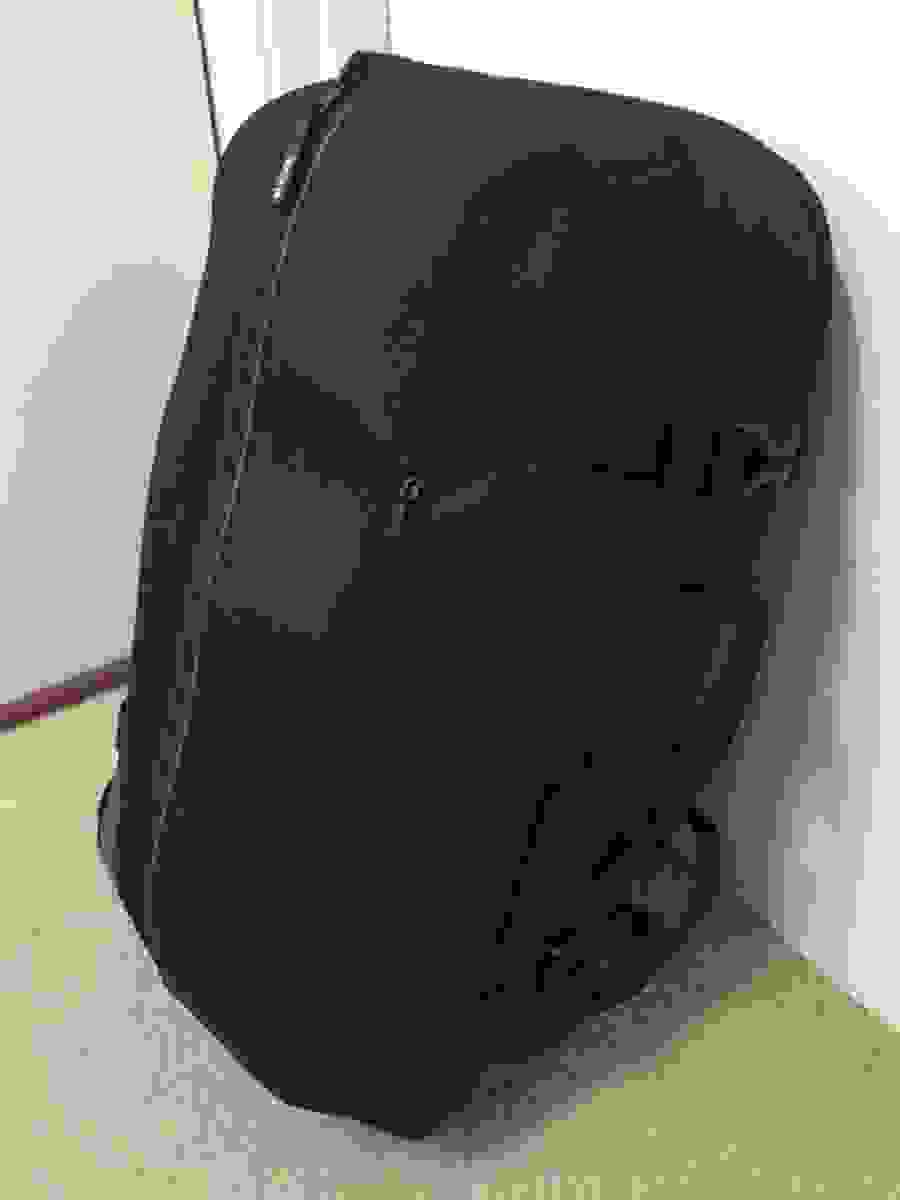
The details:
Dimensions
(Approximate)
- Height: 21″ (53.3 cm)
- Width: 13.5″ (34.3 cm)
- Depth: 7.5″ (19 cm)
- Capacity: 30 liters
These measurements fit within the maximum dimensions for international carry-on limits, which are smaller than what’s allowed on most North American airlines, because Americans always do everything bigger.
The pack actually has a lot of structure built into the walls, using foam padding to prevent it from collapsing or bulging, so there shouldn’t be anything sticking out when the airlines measure it to make sure it’ll fit on the plane (though it does take up a bit of internal space to include those semi-rigid panels).
Weight
This is going to be a little complicated, because of all the optional, removable features, so I’m grouping these items based on how they are sold:
- Backpack (including rain cover): 3 lbs, 6 oz (1.54 kg)
- Tripcover (including all accessories): 1 lb, 6 oz (0.62 kg)
- Suitcover: 1 lb, 9 oz (0.72 kg)
The Suitcover is just a single piece, but the Tripcover includes the following items:
- Packing cube system: 10.12 oz (0.28 kg)
- Toiletry kit: 4.76 oz (0.13 kg)
- Shirt folder: 6.35 oz (0.18 kg)
- Laundry bag: 0.71 oz (0.02 kg)
Don’t worry, there’ll be pictures down below of what all that looks like. So let’s get started.
On the outside
Starting with the back panel, there’s a full range of shoulder, hip, and sternum straps, and a padded back cushion with air channels for some breathability:
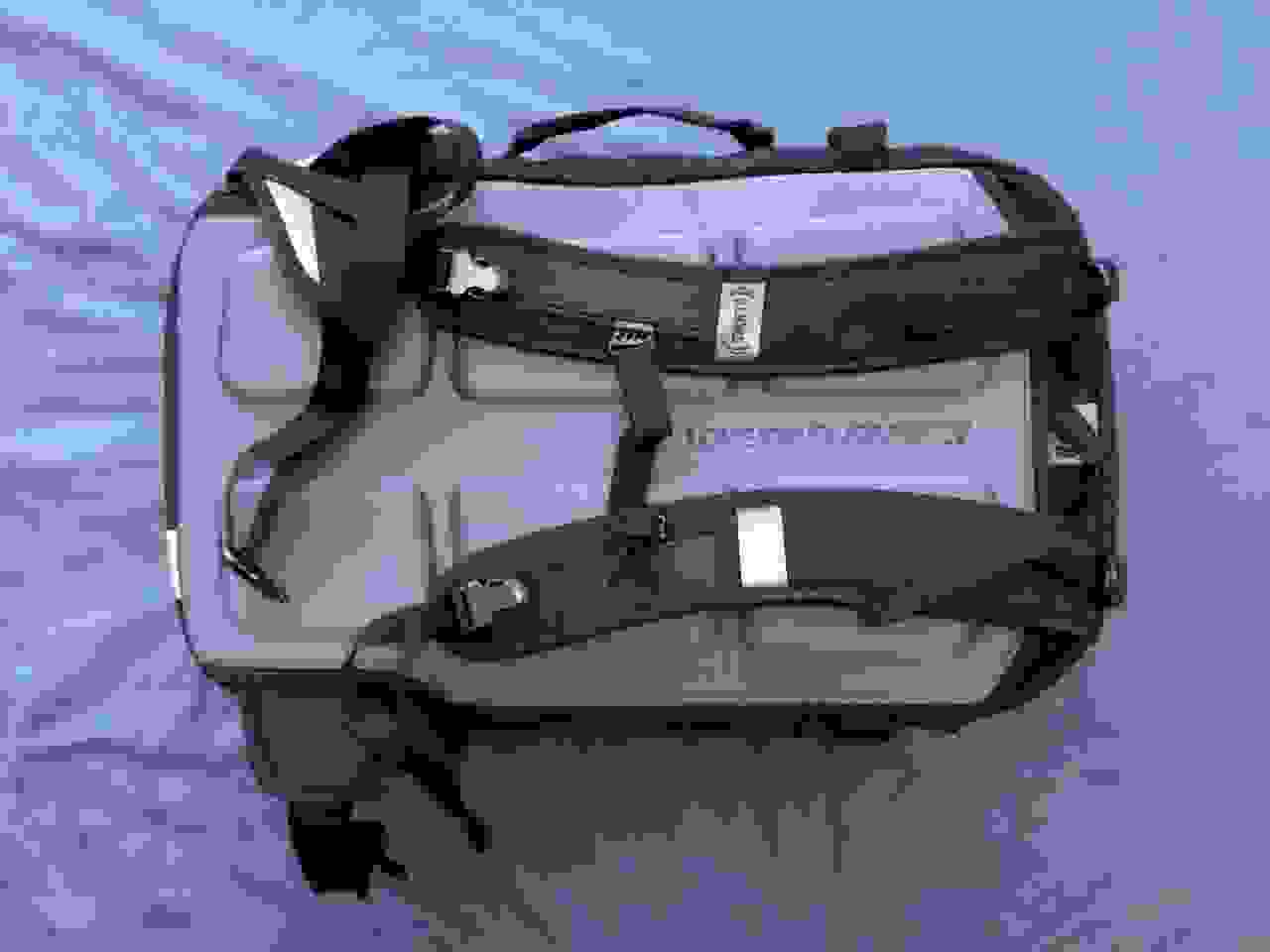
I do like the straps, although I’d like the hip belt padding to be a bit longer; the padded section isn’t long enough to cover the hip bone, so it doesn’t provide much cushioning there. It’s something to keep in mind if you’re planning on carrying it over long distances.
The straps tuck away behind the back panel, like this:
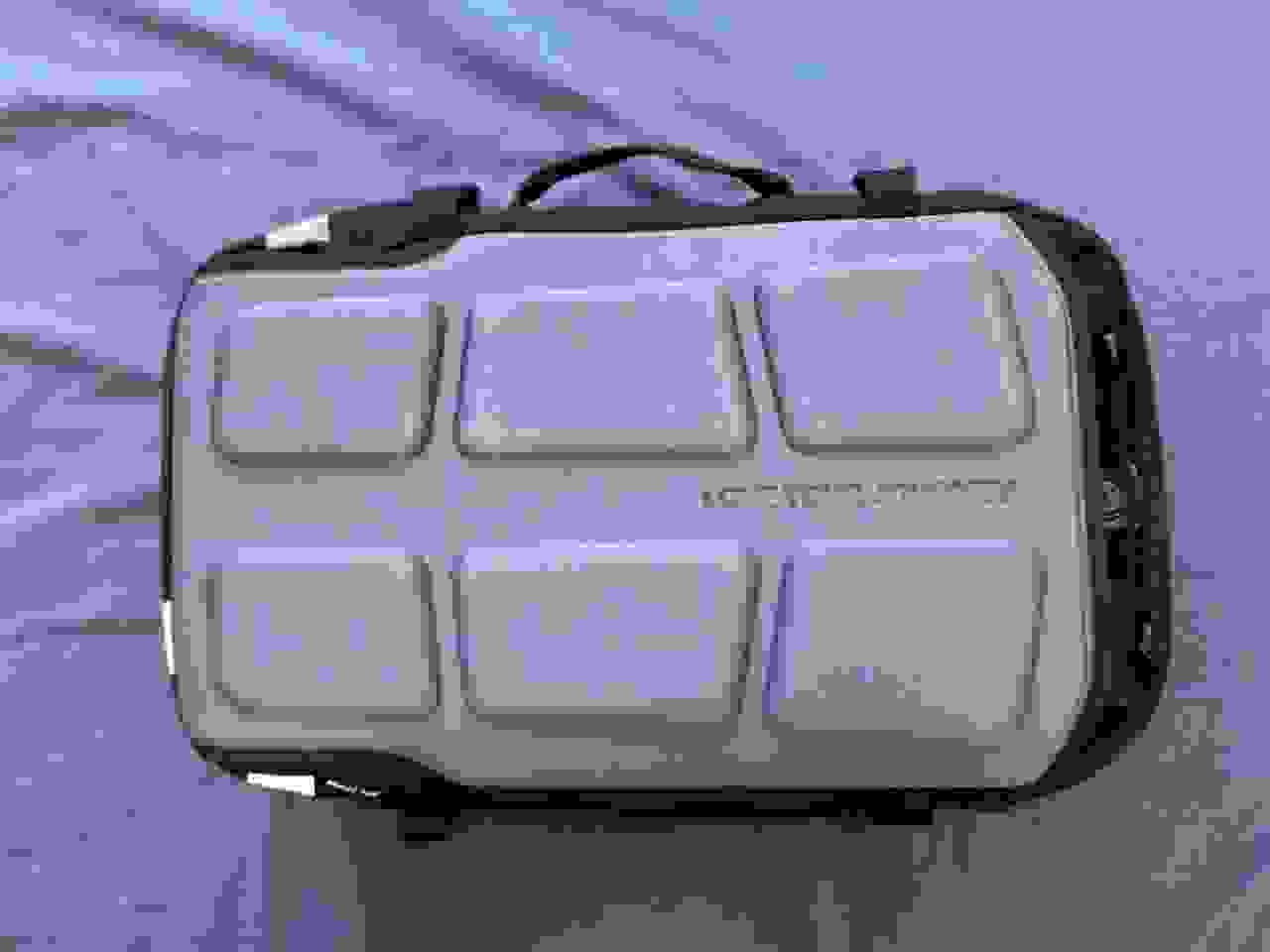
This allows you to use it as a checked bag, without the straps getting snagged on something.
On the top of the bag, there’s a simple, drop-in laptop compartment.
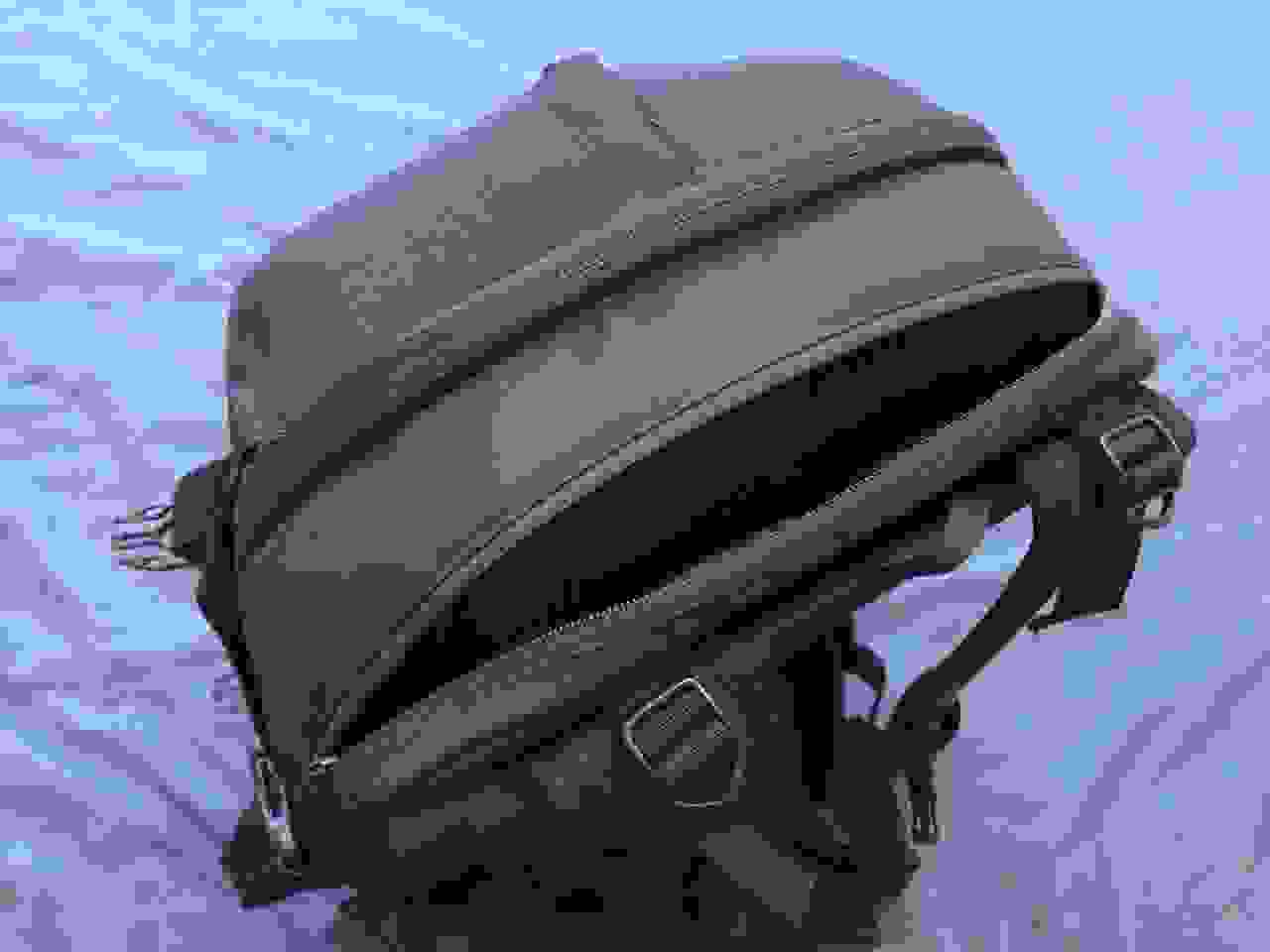
The bottom of that compartment is suspended above the floor of the pack, so if you drop the pack on the ground, the laptop won’t get hurt. The zippers don’t lock, though, so that’s something to keep in mind.
Along the side with the grab handle there are two zippered pockets:
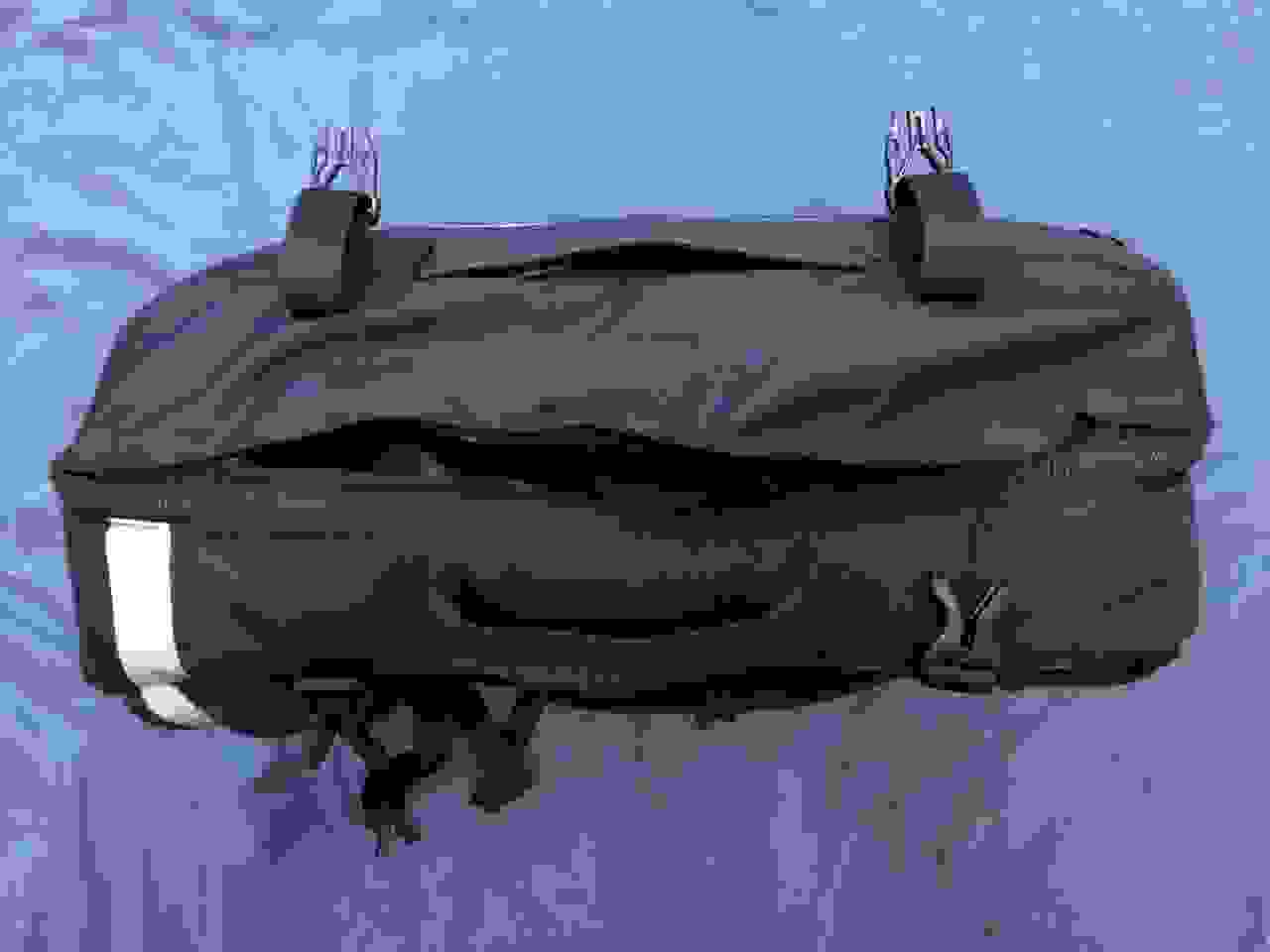
The little one is sized for smartphones, passports, and other things of that size. The larger one is intended for shoes, although because it’s a flat compartment, storing shoes in there will intrude on the space of the adjacent pocket. It’s easier packing smaller, flatter shoes in there, like flip-flops, or boat shoes, especially if you’re filling up the compartment immediately next to it.
Over on the other side there’s another small compartment, with a detachable rain cover.
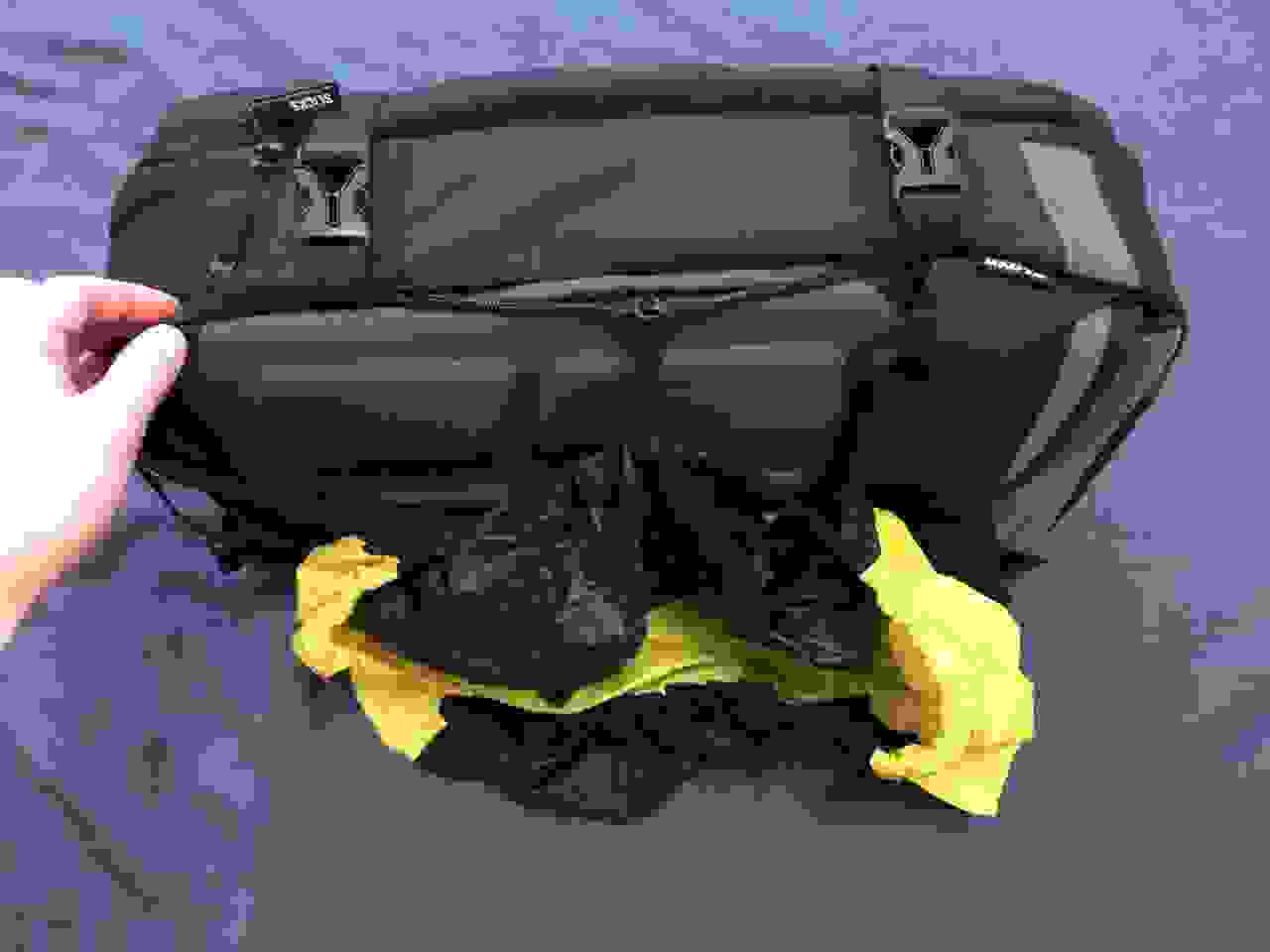
The rain cover even has slots for the hip belt, so it’s quite secure when attached.
Okay, let’s move on to the front. This is where you’ll the only major issue I have with this design, and that’s the central, vertical zipper used to access this compartment:
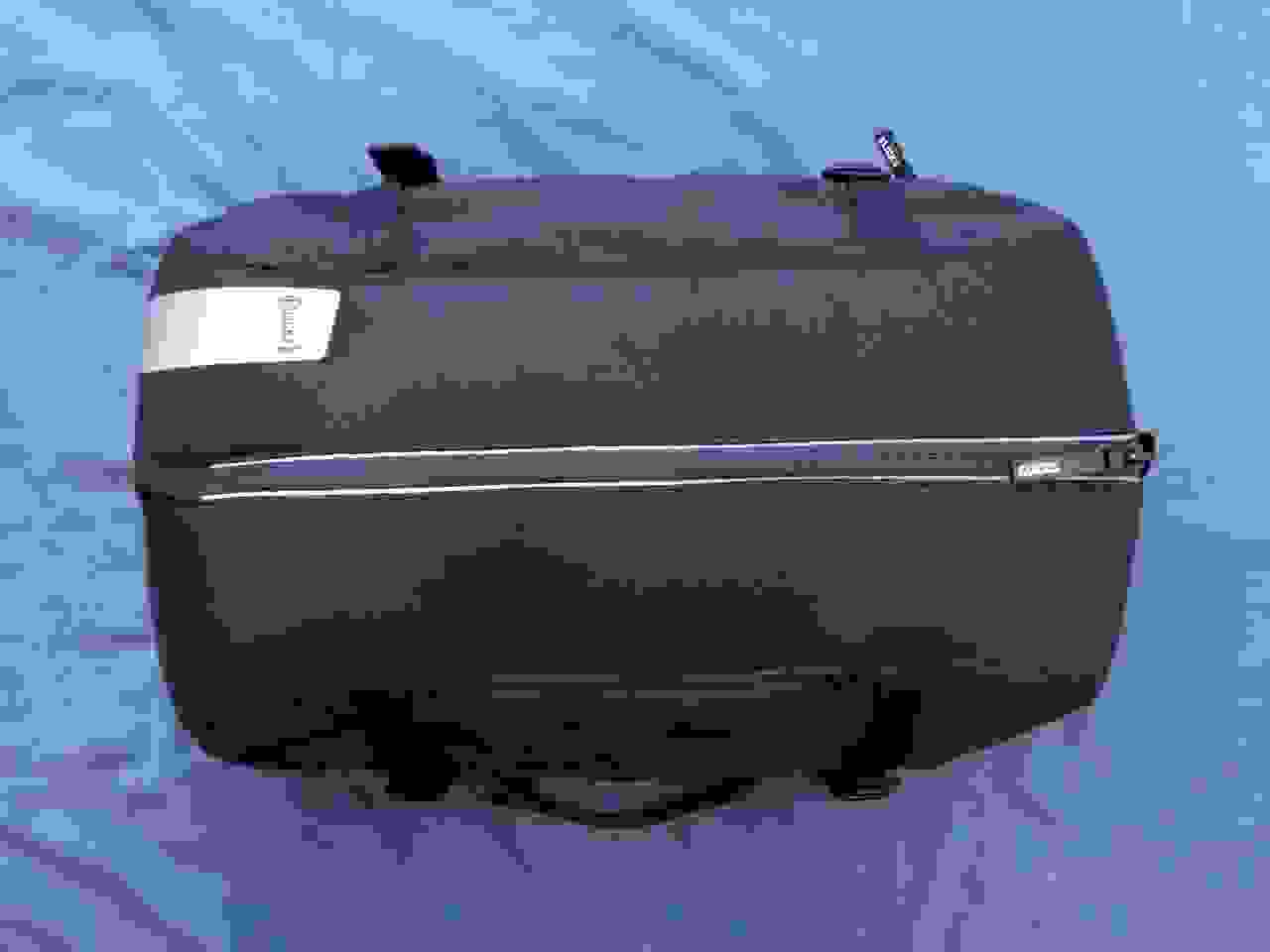
Placing a zipper in a straight line down the middle makes this compartment much more difficult to access. It’s not so easy seeing inside, and it’s especially challenging getting anything into and out of the corners without unpacking whatever’s in the center. It’s also difficult to pack to its maximum capacity, since the more you put in there, the tighter it gets.
Zippers like these work best if you’re only going to use about 2/3 of the space, since you can shove things out of the way and get what you want more easily. It also helps to pack soft items in there, like sweaters or jackets, since you can stuff them in one sleeve at a time, which is still reasonably possible, even if the pocket is nearly full. Long, skinny items are good too, because you can line them up with the zipper opening and pull them out more easily.
I definitely would have preferred a different configuration for this zipper, but it’s still usable. Just tricky to use efficiently.
On the inside
Here you can see a much more accessible layout, which is the suitcase-style opening of the main compartment:
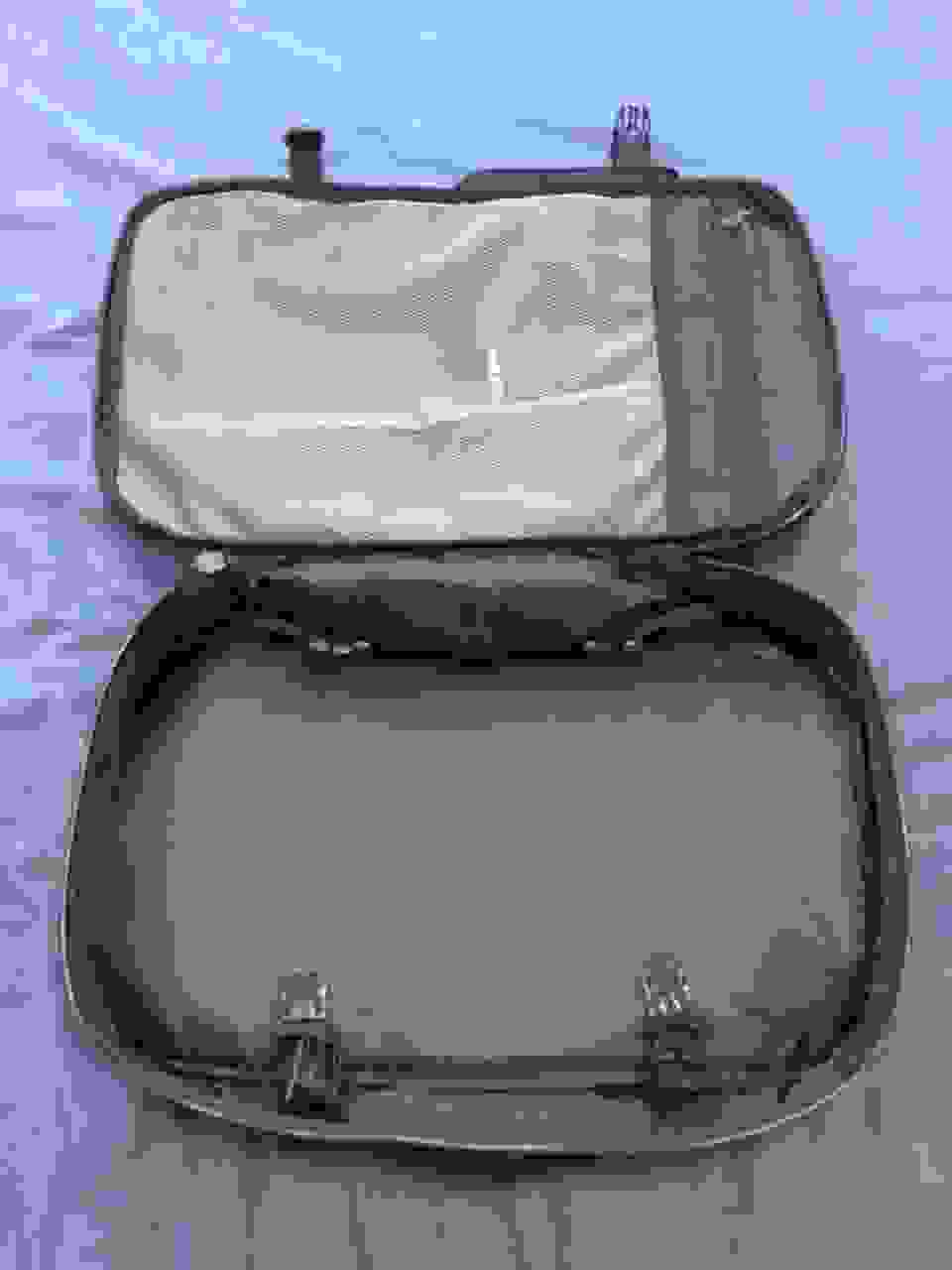
Suitcase-style opening means you can see everything quickly and easily, and packing is less of a chore. This is why I expect hiking packs will gradually disappear from the backpacker circuit, as more and more people realize how much more convenient this is.
In addition to the main packing area, the inside also has these three drop-in slots:
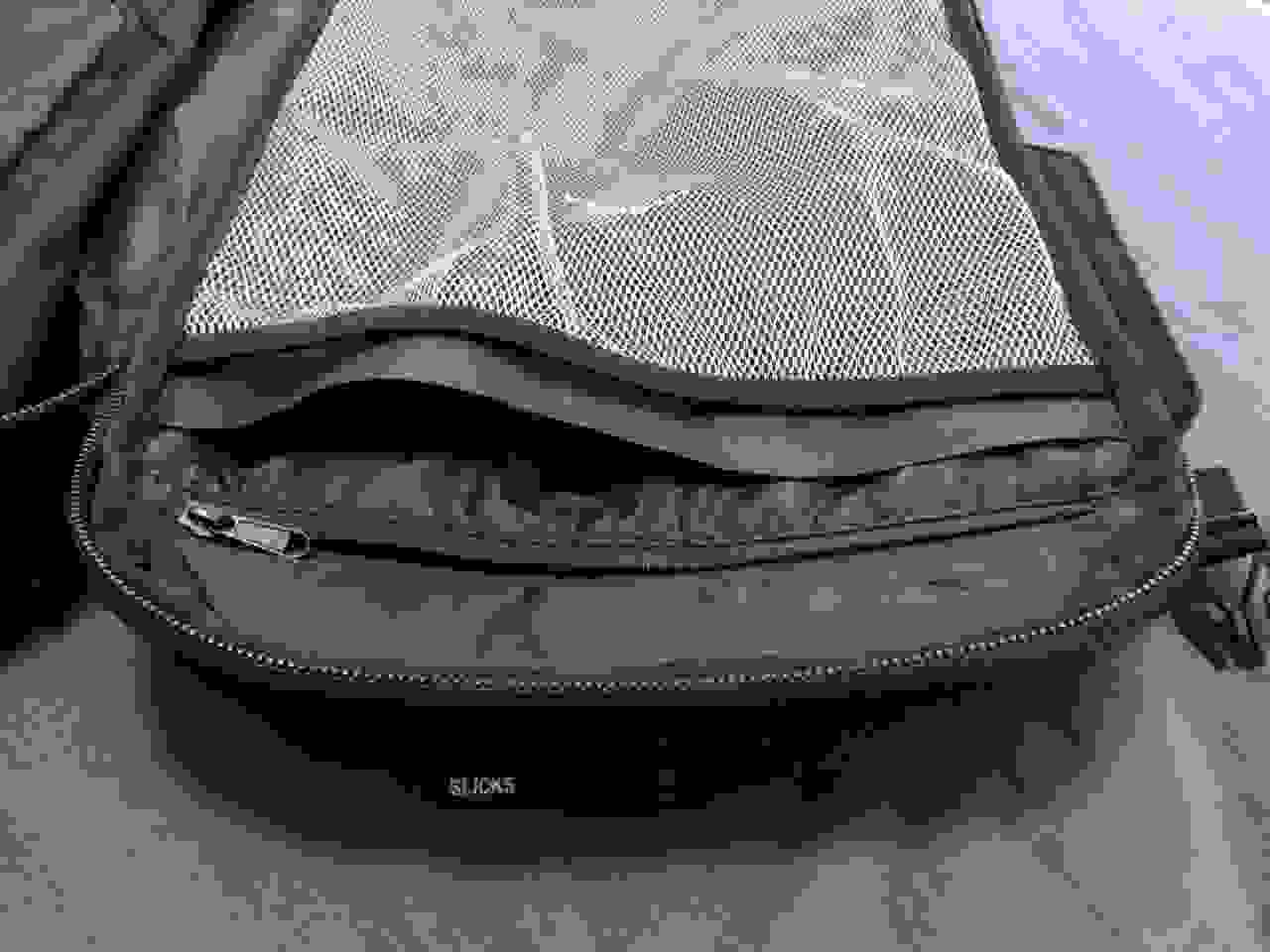
There’s an open mesh pocket, and a velcro-closure pocket, both deep enough for paper notebooks and documents. The zippered pocket is shorter, designed for smaller items, like books or cables. The entire panel is also backed by stiff foam, providing some protection for the documents so they don’t get bent out of shape by the surrounding items.
Accessories
Now we’re getting to some of the unique features of the pack. First is the built-in packing cube system, called the Tripcover:
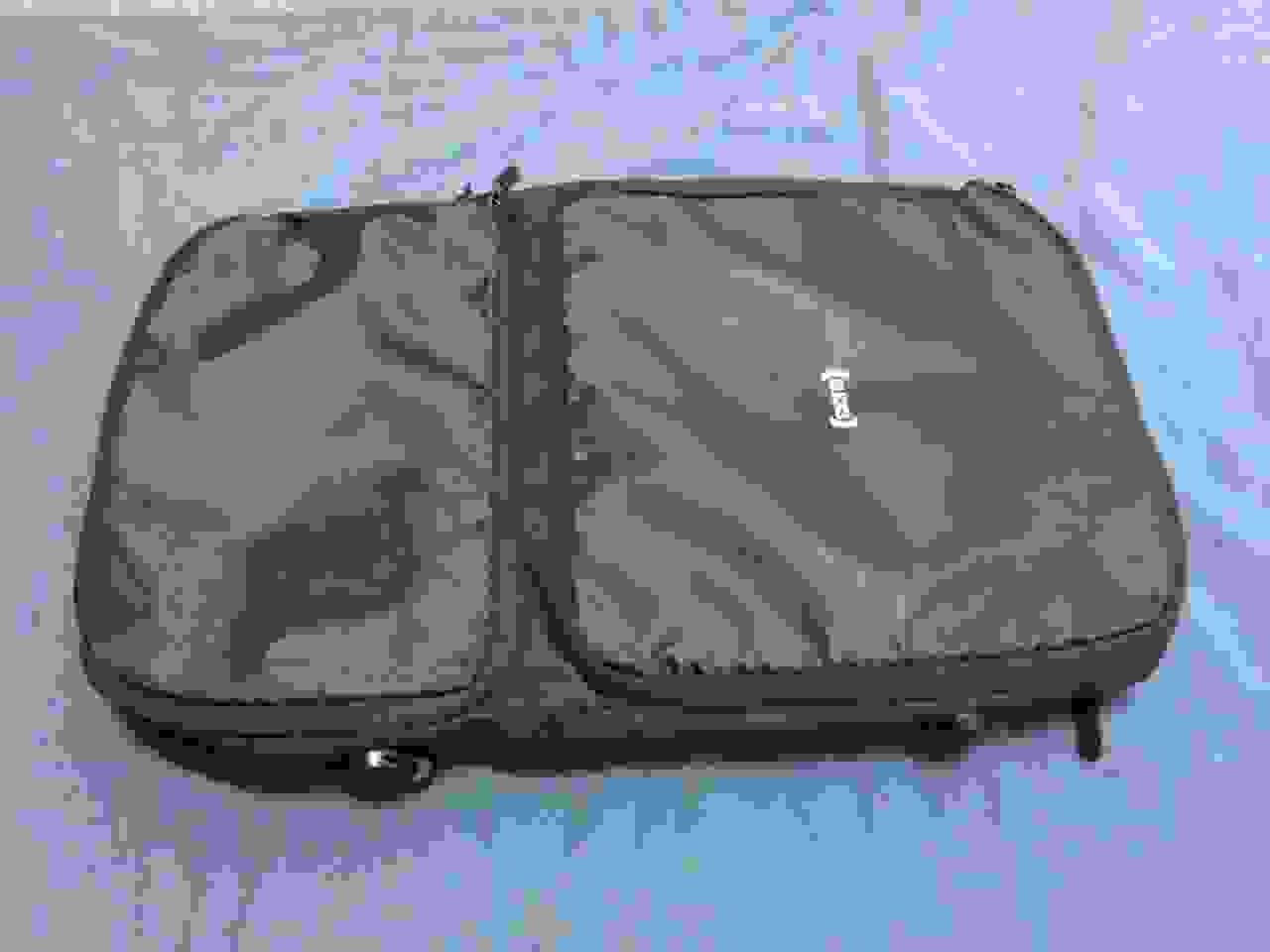
It clips into the main compartment, like this:
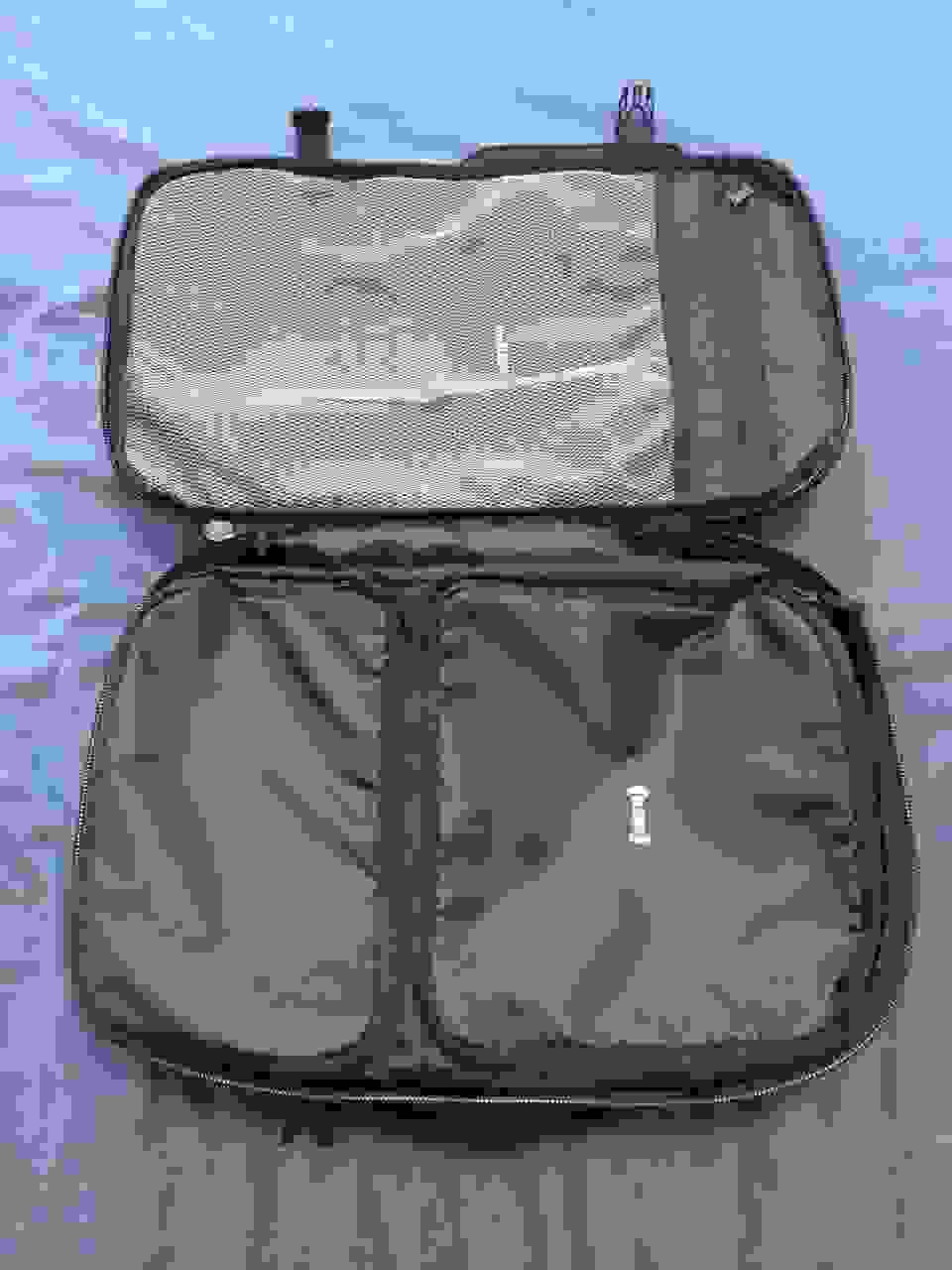
The doors open up just like packing cubes, and there’s a zippered compartment on the back of each door. The smaller compartment contains the included toiletry kit, while the larger compartment is big enough for about four or five changes of clothes, and includes a removable laundry bag:
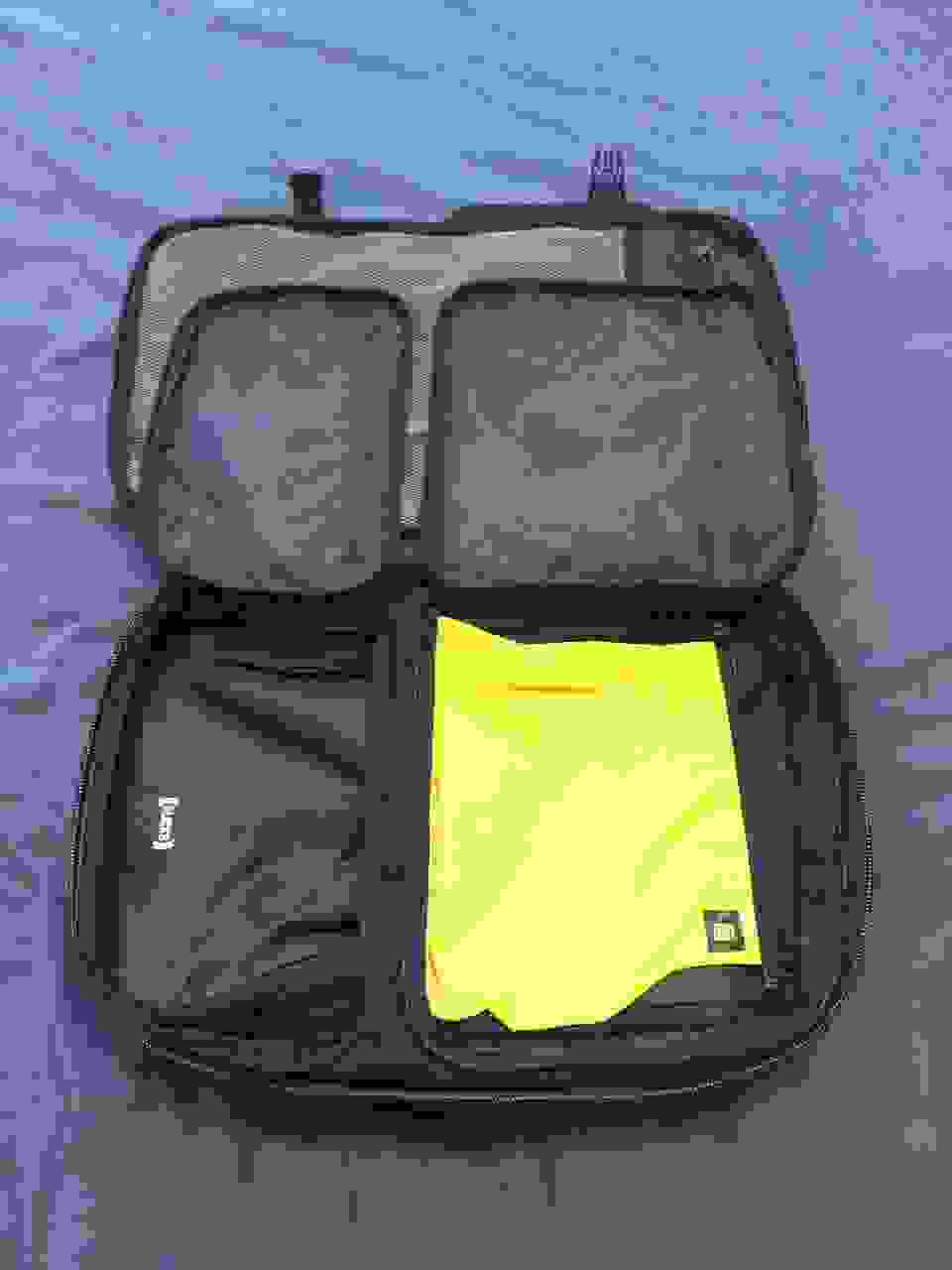
Here’s what everything looks like, all opened up:
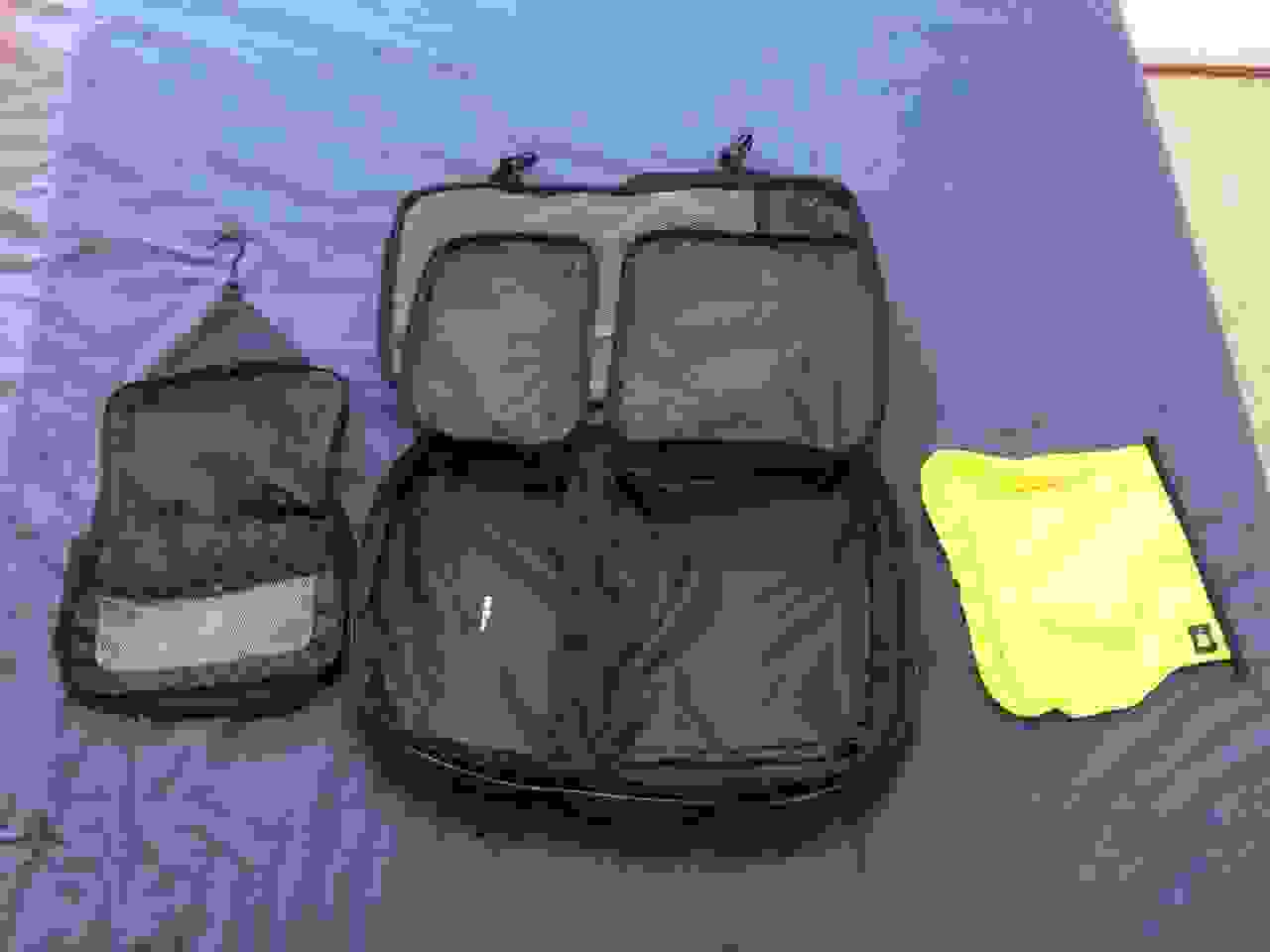
The laundry bag is a really great feature. You know those double-sided packing cubes that store clean clothing on one side, and dirty clothing on the other? This basically does the same thing. You just stuff the used items into the laundry bag (which is clipped in, so it’s always in the right place), which separates them from the rest of your clothing, without needing an entirely separate packing cube to do so. When it’s full, you just unclip it from the pack, and empty it into a laundry machine. It’s really great.
It’s not quite big enough for multiple pairs of pants, but it’s perfect for t-shirts, socks, and underwear, which is what you’d want to keep separate from the rest of your gear anyway. Pants usually don’t get all that dirty, so you can just store them in the same compartment, or maybe in that mesh compartment on the opposite side.
Flip it over and there’s another compartment in back:
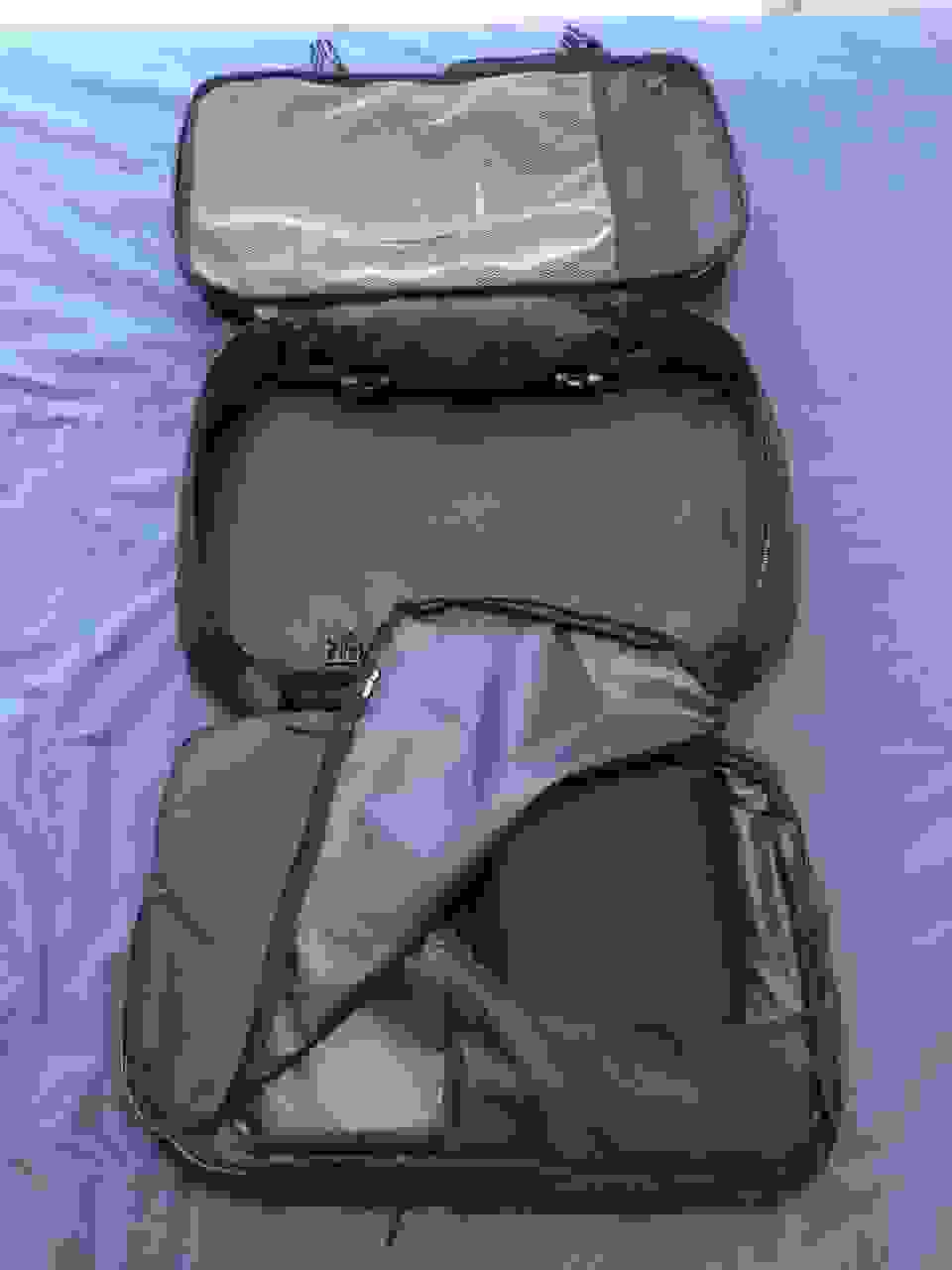
This compartment contains the shirt folder, which is a rigid foam panel with a standing collar protector:

The idea is that you’d fold up the shirt on the rectangular part of the panel, and fold the collar protector over the collar, so it doesn’t get smushed.
It’s quite big, though. Because it arches over the collar, it takes up quite a bit of space in the packing cube on the opposite side. You could pack little things in there along with the collar (coiling a belt on the inside of a shirt collar is a great place to store a belt, and also keeps the collar protected), but it still takes up quite a bit of space. I’d suggest using this only if you have a really nice shirt you need to keep protected, and you’re not taking too much else with you. Otherwise, you can skip this, and store a shirt in that same compartment with the collar folded down flat, instead of raised up.
The pack also has another optional accessory, which is the Suitcover. It’s a hanging, folding suit protector that clips into the pack, underneath the Tripcover, like this:
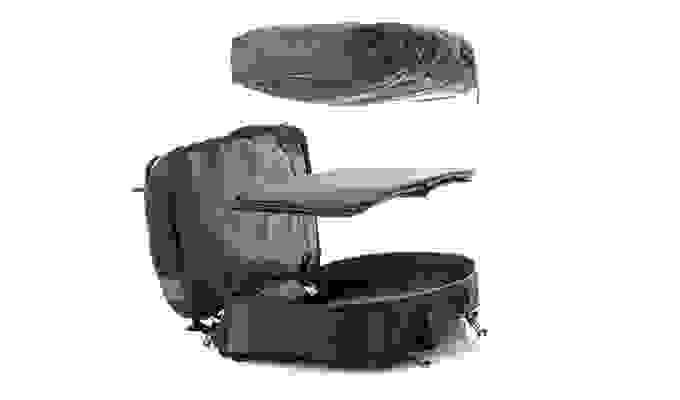
I don’t have this one, but it’s fairly self-explanatory. You zip a suit into the Suitcover, fold it up, and clip it into the pack. When you take it out, it has a built-in hanger to hang it up in your room somewhere. This keeps the suit nicely protected, and helps prevent wrinkles.
I like how all these accessories work together, fitted perfectly into the pack and flipping over or zipping open to give you quick and easy access to whatever you might need, and keeping everything perfectly contained in its place until you need it. It’s really neat to see how it all works, and it’s hard to imagine going back to a giant top-loading hiking pack after something like this.
They do start to get heavy, though. If you’re using both the Tripcover and Suitcover, the grand total pack weight is going to be around 6 lbs, 5 oz (2.88 kg), and that’s before you pack anything into it. But if you’re the type of person that likes to bring a few packing cubes, a toiletry kit, a shirt folder, a suit folder, and a small laundry bag anyway, then it’s not going to be much different in terms of weight. It’s just going to be perfectly fitted.
The pack is quite usable without all those extras, though. Because of the suitcase-style opening, relatively shallow main compartment, and tie-down straps, you can still get pretty organized without adding any of the accessories. Just put small items on the bottom, and cover them with big, flat items on top, and clip the straps to hold everything down:
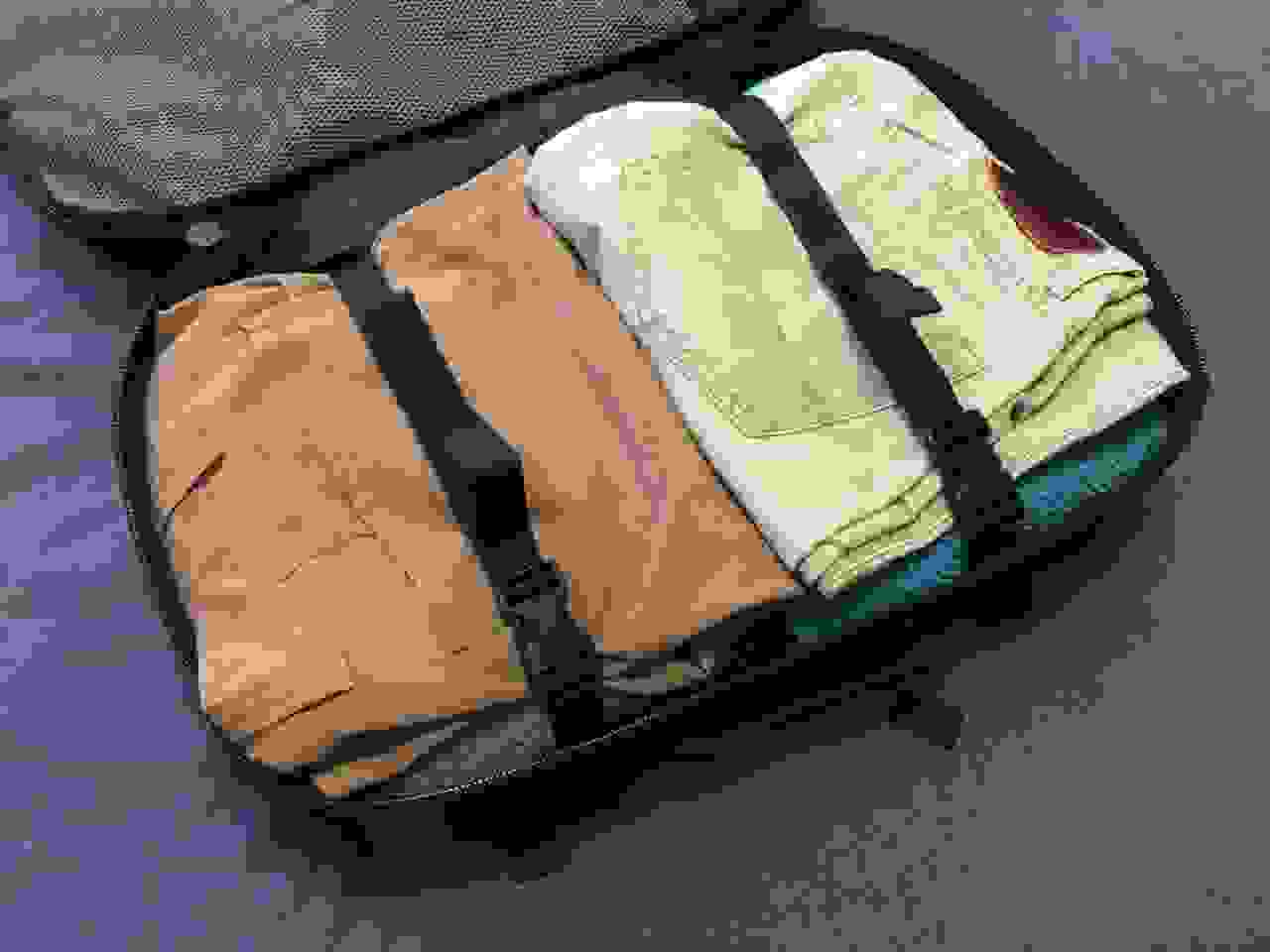
Because this compartment isn’t particularly deep, all you have to do is remove that top layer of clothing, and you’ll be able to see everything in there just fine. This would have been trickier with a deep compartment, but since this one is much shallower, you can do this quite easily.
Conclusions
There’s a lot that I like about this pack, and a lot that it does differently than most others. Those clip-in organizers help keep everything in its place, while several exterior pockets provide easy access without having to open the whole thing. The international carry-on dimensions, storable straps, and suitcase-style opening are great for global travelers, and the semi-rigid walls and compartmentalization means you can use it as an everyday backpack without it collapsing in on itself, and without everything rattling around in one giant compartment. The rain cover and reflective panels are great for bike commuters, too.
There are a few things I’d change, starting with that central, vertical zipper for the outer compartment, which could use a different configuration to make it more accessible. I’d also make the padding on the hip belt extend further, to cover the hip bone, so it’s more comfortable on long walks. I’d like to see smaller buckles on the tie-down straps in the main compartment, as the current ones are quite big. I’d also add some padding to the suitcase grab handle, as it’s currently just a strap. The adjuster buckles on the backpack straps are also a bit tricky to loosen, though that’s not likely to continue being a problem once you get everything adjusted. Locking zippers might be good too. And I might add an all-black rain cover, just to look cool.
But overall, it’s quite clever. There was obviously a lot of thought that went into this pack, and there’s a place for everything.
Head over to Slicks to check it out. It has also been added to Huckberry, so check there for sales too.




I’ve read a few of your carry-on size backpacks now; all are excellent and I enjoy the in-depth detail from the perspective of a digital nomad. question: give how many packs you’ve had, which do you choose to travel with for long-term digital nomad living?
I like being able to test a few different options, so I’ve used the Minaal and the Synapse 25 on extended trips of at least a month. I need a hip belt or I go crazy, so that kind of limits my options just to the ones that have it, but I don’t have a personal favorite at the moment. They all work a little differently and have their own pros and cons, but I like the organizational layout of the Aer Travel Pack about as much as anything I’ve seen so far.